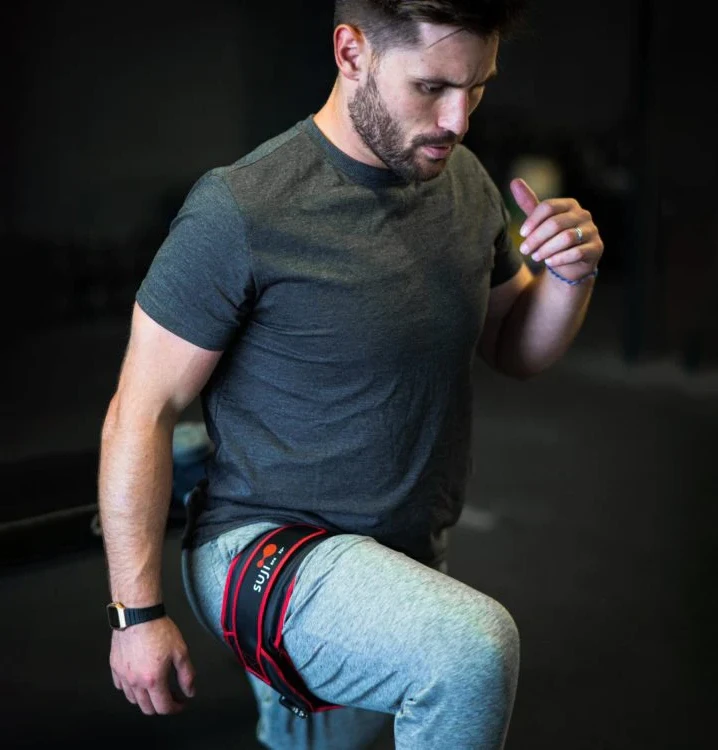In the world of fitness and rehabilitation, Blood Flow Restriction (BFR) Training has been garnering increasing attention for its potential to revolutionize training methodologies and speed up recovery. This novel approach, once a well-kept secret of elite athletes and physical therapists, is now gaining traction among fitness enthusiasts and healthcare professionals alike. In this article, we explore the principles, benefits, and applications of BFR training, shedding light on its remarkable potential to unlock peak performance and accelerate rehabilitation.

Understanding Blood Flow Restriction (BFR) Training:
Blood Flow Restriction Training involves the application of specialized cuffs or bands around a limb to partially restrict venous blood flow while maintaining arterial inflow during exercise. This controlled occlusion creates a unique physiological environment within the muscle, leading to a cascade of beneficial effects that stimulate muscle growth, enhance strength, and promote recovery.
The (Nerdy but Interesting) Science Behind BFR:
At the heart of BFR lies the concept of metabolic stress. By limiting oxygen supply to working muscles while allowing metabolites to accumulate, BFR induces a state of metabolic stress that mimics the effects of high-intensity exercise. This metabolic stress triggers a series of adaptive responses, including the activation of fast-twitch muscle fibers, the release of anabolic hormones such as growth hormone and insulin-like growth factor-1 (IGF-1), and the upregulation of protein synthesis pathways.
Benefits of Blood Flow Restriction Training:
1. Muscle Hypertrophy: Despite using lighter loads, BFR has been shown to induce significant muscle growth, making it a valuable tool for individuals looking to maximize muscle mass without subjecting their bodies to excessive strain (Loenneke et al., 2012).
2. Strength Gains: BFR training has been demonstrated to increase muscle strength and power, even when using loads as low as 20-30% of one-repetition maximum (1RM) (Patterson et al., 2019). This makes it particularly effective for individuals recovering from injuries or those unable to lift heavy weights due to various limitations.
3. Accelerated Recovery: By promoting localized ischemia and the subsequent release of growth factors, BFR accelerates tissue repair and regeneration, facilitating faster recovery from injuries and intense workouts (Centner et al., 2019).
4. Joint Preservation: BFR allows individuals to achieve muscle hypertrophy and strength gains with minimal joint stress, making it an attractive option for those with joint issues or orthopedic conditions (Segal et al., 2015).
Applications of BFR:
From elite athletes aiming to gain a competitive edge to individuals undergoing rehabilitation after surgery, BFR has a wide range of applications across various populations and settings. It can be integrated into resistance training programs, rehabilitation protocols, and even cardiovascular exercise routines to enhance outcomes and optimize performance.
Conclusion:
As our understanding of human physiology continues to evolve, so too does our approach to training and rehabilitation. Blood Flow Restriction Training represents a paradigm shift in this regard, offering a safe, efficient, and effective means of stimulating muscle growth, enhancing strength, and accelerating recovery. Whether you’re an athlete striving for peak performance or someone on the path to recovery, BFR holds immense promise as a versatile tool for unlocking your full potential. Come try it for yourself at PhysioEdge Physical Therapy & Sports Performance!
References:
– Loenneke, J. P., Wilson, J. M., & Wilson, G. J. (2012). A mechanistic approach to blood flow occlusion. International journal of sports medicine, 33(01), 1-4.
– Patterson, S. D., Hughes, L., Head, P., & Warmington, S. (2019). Blood flow restriction training: a novel approach to augment clinical rehabilitation: how to do it. British journal of sports medicine, 53(14), 1443-1445.
– Centner, C., Wiegel, P., Gollhofer, A., & König, D. (2019). Effects of blood flow restriction training on muscular strength and hypertrophy in older individuals: A systematic review and meta-analysis. Sports Medicine, 49(1), 95-108.
– Segal, N. A., Williams, G. N., Davis, M. C., Wallace, R. B., & Mikesky, A. E. (2015). Efficacy of blood flow-restricted, low-load resistance training in women with risk factors for symptomatic knee osteoarthritis. PM&R, 7(4), 376-384.





